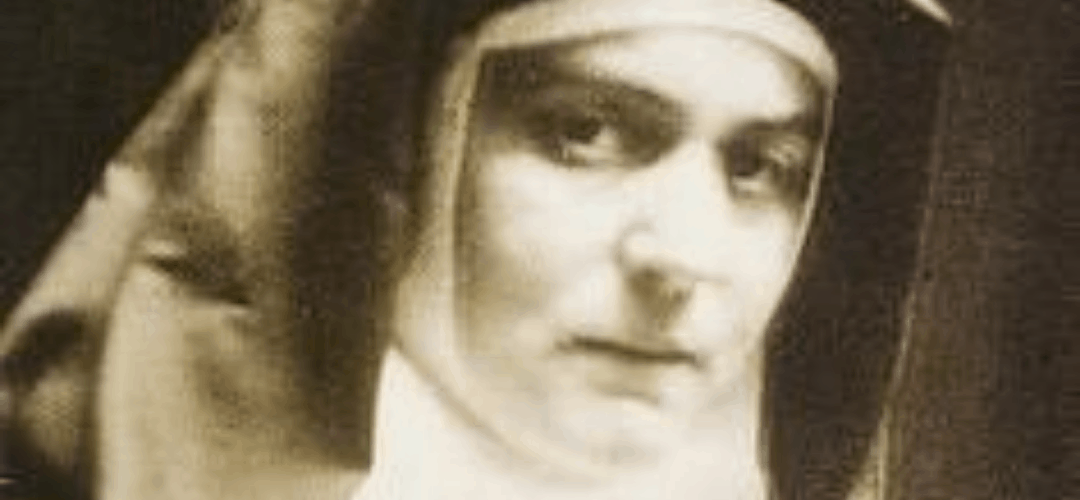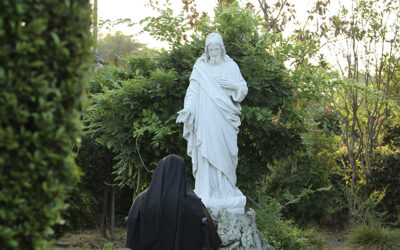Greater love has no one than this: to lay down one’s life for one’s friends. (John 15:13)
Have you ever thought of what this might look like in real life? The account below relates a story of the unconditional love of a little boy:
There was a young boy whose older brother was in a car crash. The father approached the younger son shortly after the crash and said, “Son, your older brother needs a blood transfusion in order to live. The doctors have determined that only you can provide this blood . Will you provide blood for your brother so that he may live?” The younger son did not hesitate in answering that he would indeed help his older brother. The little boy did not realize how simple and safe the procedure was.
Although the youngster was normally a very talkative little boy, he remained quiet during the car ride to the hospital. The father, rather than intrude, thought it best to leave the young boy to his own thoughts.
On arrival they entered the now familiar doors of the town hospital. As the father and son sat in the hospital room, the nurse entered with the needle in hand. She commented how courageous the young boy was, prepared the boy’s right arm as she had done to hundreds of other patients over the years, and slowly inserted the needle into his arm; the vial began to quickly fill with the younger son’s blood. After the vial filled, the young boy, with tears in his eyes, turned to his father and asked, “Daddy, how long do I now have before I die?”
In his Canonization Homily of 1998 Pope John Paul II quoted Teresa Benedicta of the Cross:
Our love of neighbor is the measure of our love of God. For Christians —- and not only for them —- no one is a ‘stranger’. The love of Christ knows no borders.
Who is Saint Teresa Benedicta of the Cross, perhaps better known as Edith Stein?
She was born, Edith Stein, into an observant Jewish family in Breslau on October 12, 1891, the youngest of 11, as her family were celebrating Yom Kippur, that most important Jewish festival, the Feast of Atonement. Her father died when she was two years old, and her hard-working and devout mother took over the care of her large family and the father’s timber business. However, as a teenager, Edith lost her faith in God. “I consciously decided, of my own volition, to give up praying,” she said.
She was a talented student, and after finishing school with top results, she chose to study philosophy in Gottingen where she encountered many new ways of thinking, under the mentorship of Edmund Husserl. She became his pupil and teaching assistant, and he later tutored her for a doctorate. Husserl’s phenomenology unwittingly led many of his pupils to the Christian faith. In G6ttingen Edith Stein also met the philosopher Max Scheler, who directed her attention to Roman Catholicism. Her brilliant mind kept searching for the truth. As part of God’s plan she kept bumping into Catholicism until at last at a friend’s house she picked up the autobiography of St Teresa of Jesus and read it all through the night, saying to herself as she finished reading at dawn: “This is the truth”.
On January 1, 1922, Edith was baptized and received into the Catholic Church. It was a decision that her mother was never able to accept. Edith, however, continued teaching philosophy and writing. Slowly she began to sense another call; to unite her life with the fate of her own Jewish people.
Her vocation took a turn of events when Nazi law made it no longer possible for her to continue teaching and lecturing. She was admitted to the Discalced Carmelite monastery in Cologne the following October and received the religious habit of the Order as a novice in April 1934, taking the religious name Teresa Benedicta of the Cross (“Teresa blessed by the Cross”).
The concern of her superiors for her safety resulted in her transfer in 1938 together with her sister Rosa, by then also a convert and an extern Sister of the monastery, to the Carmelite monastery in Echt, Netherlands. However, that state was also invaded by the Nazis in 1940. For a while they remained undisturbed until they were arrested by the Nazis on August 2, 1942 and sent to the Auschwitz concentration camp, where they died in the gas chamber on August 9, 1942.
Teresa Benedicta was beatified on May 1, 1987 and canonized on October 11, 1998, by Pope John Paul II.
What does Teresa Benedicta teach us about ‘No Greater Love’?
Hilda C. Graef in her book The Scholar and the Cross describes Teresa Benedicta as a gifted objective intellectual, who at the same time could penetrate the mind of another and enter with compassion into the suffering of the other.
Perhaps her first concrete experience of the suffering of others came through her service in an Austrian field hospital during World War I. She wrote, “I no longer have a life of my own.” This was a hard time for her, during which she looked after the sick in the typhus ward, worked in an operating theatre, and saw young people die. When her good friend Adolf Reinach died in Flanders in November of 1917, Edith went to Göttingen to visit his widow. Expecting to find her overcome with grief, she found instead a woman of faith. “This was my first encounter with the Cross and the divine power it imparts to those who bear it … it was the moment when my unbelief collapsed and Christ began to shine his light on me – Christ in the mystery of the Cross.”
Little by little Jesus was drawing Edith into the mystery of the His Cross. When Edith returned home to Breslau to say good-bye to her mother and her family before entering Carmel, she took the opportunity to accompany her mother to the synagogue. The tears of her mother penetrated Edith’s heart and she admitted later, “I did not feel any passionate joy. What I had just experienced was too terrible. But I felt a profound peace – in the safe haven of God’s will.”
Having received her name and title at her Investiture in the Carmel of Cologne in 1934 she grew daily in the understanding of the details of God’s plan for her. “I understood the cross as the destiny of God’s people, which was beginning to be apparent at the time (1933). I felt that those who understood the Cross of Christ should take it upon themselves on everybody’s behalf. Of course, I know better now what it means to be wedded to the Lord in the sign of the cross. However, one can never comprehend it, because it is a mystery.”
In 1941 she wrote to a friend, who was also a Carmelite, “One can only gain a knowledge of the cross if one has thoroughly experienced the cross”. Although cloistered she saw herself as being called to go into the world and carry divine life into it. This she was able to do by the witness of her own life, as well as the writings that she continued to do behind the walls of Carmel and eventually her witness and service ministered in the horrifying conditions of the prison camps.
Edith was a seeker of truth. Once she was seized by that truth, which is Jesus Himself, the relationship of love was formed and she was challenged as Pope John Paul II exclaimed in his Canonization Homily, “Whoever truly loves does not stop at the prospect of suffering: he accepts communion in suffering with the one he loves”. In her study of St. John of the Cross she expressed her understanding of suffering as expiatory only if one was in union with the Divine Head and thus one could be happy although suffering.
After her entry to Carmel, Edith compared herself to Queen Esther saying said: “I am a very poor and powerless little Esther, but the King who has chosen me is infinitely great and merciful.” Although she took measures to seek safety from the Nazis she intuited that the Lord was calling her to lay down her life in imitation of Him. Perhaps as the little boy in the story at the beginning of this article, she could also say, “Father, How long do I now have before I die?” From Holland she wrote, “I accept the death that God has prepared for me in complete submission and with joy as being his most holy will for me. I ask the Lord to accept my life and my death… so that the Lord will be accepted by His people and that His Kingdom may come in glory, for the salvation of Germany and the peace of the world”.
Teresa Benedicta came into the world on the Feast of Atonement. On this day the High Priest was permitted to enter the Holy of Holies in the Temple of Jerusalem, to offer sacrifice for the sins of the whole people. How significant for her to be born on a day which would foreshadow her life and death! How significant also her last known words, heard in Echt, which were addressed to her sister Rosa as they were arrested: “Come, we are going for our people”.
Pope John Paul II closed his Canonization Homily with the following words,
Through the experience of the Cross, Edith Stein was able to open the way to a new encounter with the God of Abraham, Isaac and Jacob, the Father of our Lord Jesus Christ. Faith and the Cross proved inseparable to her. Having matured in the school of the Cross, she found the roots to which the tree of her own life was attached. She understood that it was very important for her “to be a daughter of the chosen people and to belong to Christ not only spiritually, but also through blood”.
We give thanks to God for this gift. May the new saint be an example to us in our commitment to serve freedom, in our search for the truth. May her witness constantly strengthen the bridge of mutual understanding between Jews and Christians.
Saint Teresa Benedicta of the Cross, pray for us! Amen.




